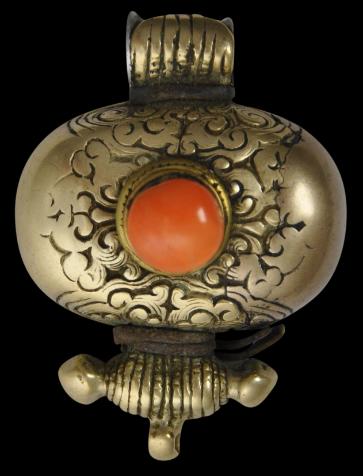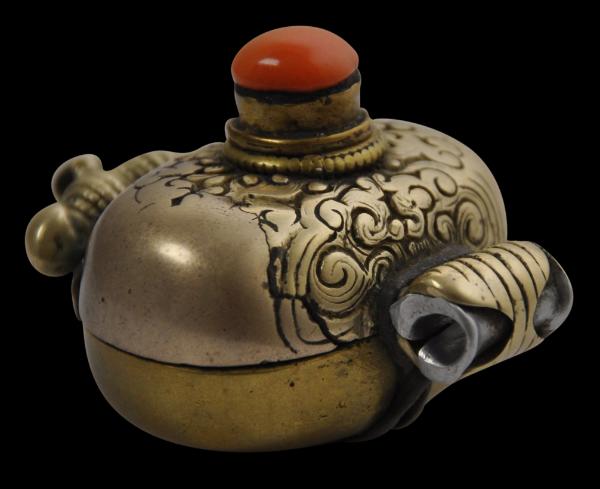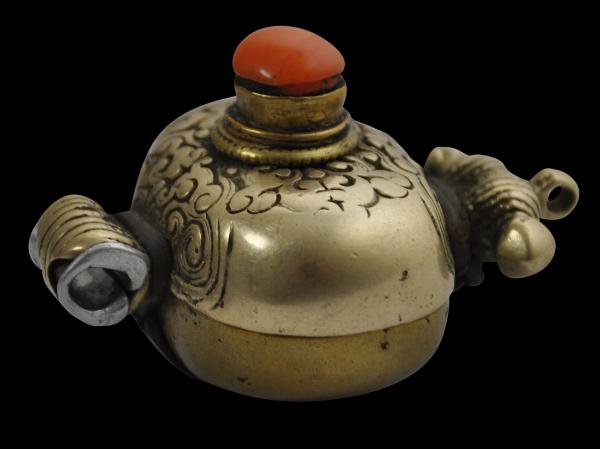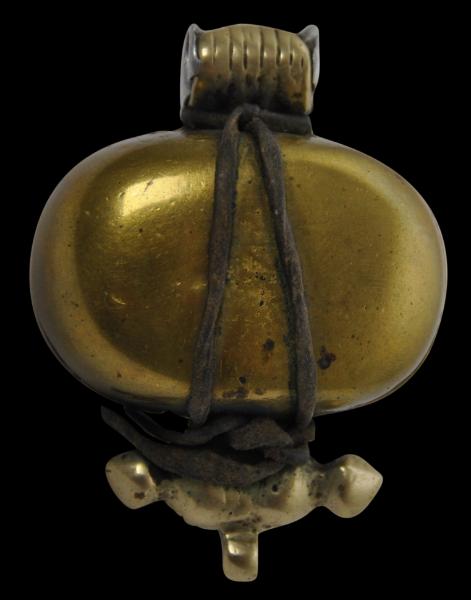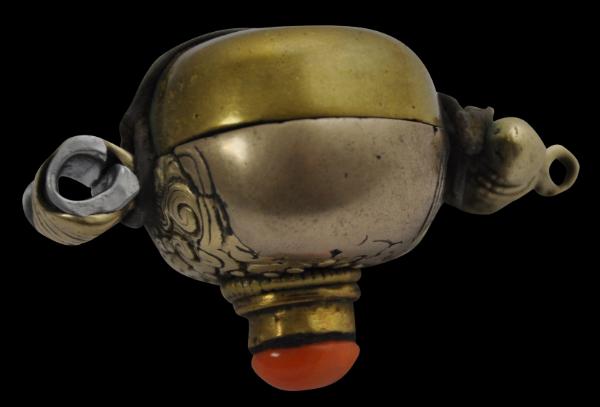
Eastern Tibetan Ga’u Box
Small Woman’s Gilded Silver & Brass Karima Ga’u Box inset with Large Coral Cabochon
Kham Province, Eastern Tibet
late 19th century
height: 6.2cm, width: 4.6cm, thickness: 4cm, weight: 98g
One of the most striking aspects of this small, pleasing ga’u or amulet box is its wear and patina: its age are wear from ritual use is very evident, adding to its beauty and charm.
It is a small woman’s
kerima ga’u with a large, old, high pale coral cabochon in the centre. In two halves, the front half is of gilded or gold-plated silver. The back half is of brass. According Clarke (2004, p. 85), the name kerima is derived from the word ‘khal‘ or kidney, because of its shape.
The top is surmounted by a thick, ribbed suspension loop, which shows wonderful wear. The bottom is decorated with a prominent ribbed thunderbolt (dorje) motif. There is a small gilded silver loop under the
dorje on the bottom. Decorative ornaments or chains hooked up to shoulder level might have been suspended from this.
The incised foliage design around the coral is worn out on the edges.
Amulet or relic boxes of this type were made in Kham Province, Eastern Tibet, and it dates probably to the late 19th century.
The two halves of the box are tied shut by old leather ties. The box is in a fine stable condition. Other than ritual wear, there are no losses.
Such
ga’us were worn by Tibetans as talismanic or protective devices. They contained an assortment of items deemed to have protective value, including small pieces of paper inscribed with Tibetan mantras, small seashells and so on.
References
Beer, R., The Encyclopedia of Tibetan Symbols and Motifs, Serindia, 2004.
Clarke, J.,
Jewellery of Tibet and the Himalayas, V&A Publications, 2004.
Levenberg, L., pers. comm., August 2016.
Proser, A., (ed.),
Pilgrimage and Buddhist Art, Asia Society Museum/Yale University Press, 2010.
Provenance
private collection, UK.
Inventory no.: 3808
SOLD

